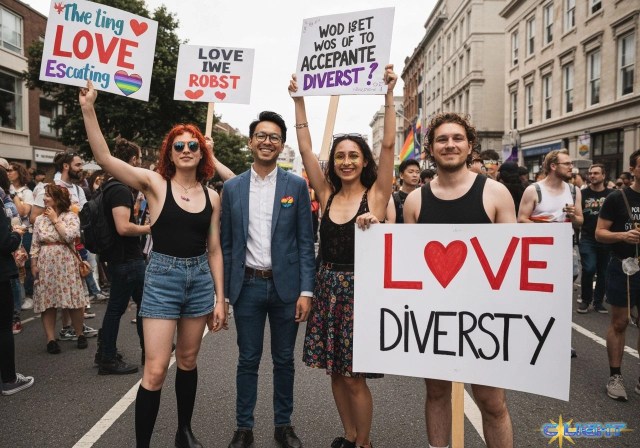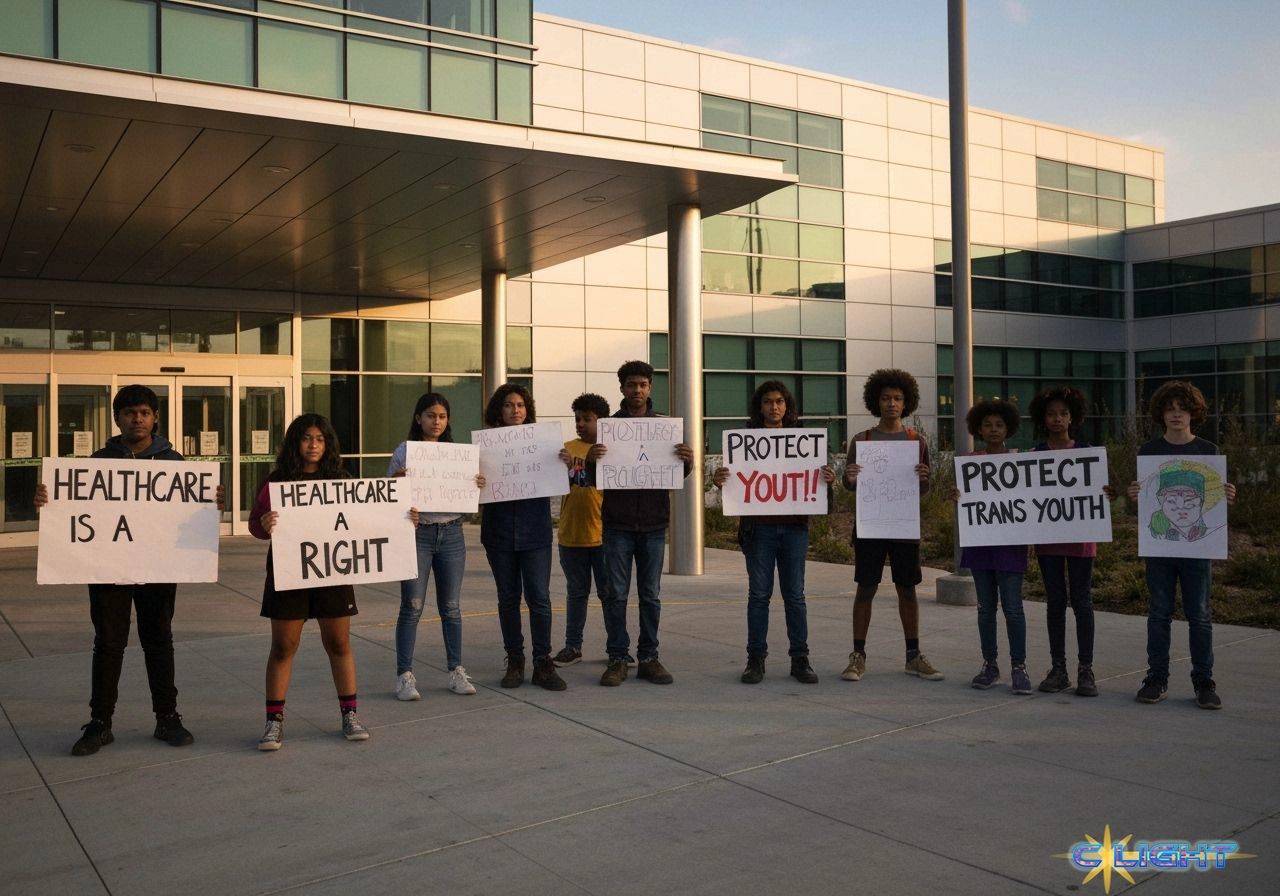The news sent shockwaves through the LGBTQ+ community and healthcare advocates nationwide: the Center for Transyouth Health and Development at Children’s Hospital Los Angeles (CHLA), a beacon of care for thousands of gender-diverse youth for over three decades, will cease accepting new patients on July 22, 2025. Once the largest gender-affirming care facility of its kind, its impending closure is not an isolated incident but a stark and alarming consequence of escalating federal pressure and a systematic effort to restrict vital transgender healthcare, marking a critical juncture for transgender rights across the United States.
The Heartbreaking Closure of a Lifeline
For over 30 years, CHLA’s Center for Transyouth Health and Development has been a sanctuary, providing essential, life-affirming care to young people from California and beyond. Its comprehensive services made it a national leader in gender-affirming care, offering a multidisciplinary approach that supported the holistic well-being of its patients.
The first hint of trouble came in February 2025, when CHLA initially announced its intention to close the clinic, citing the president’s executive order issued in January, which controversially dictated an end to gender-affirming care for minors, characterizing it as “chemical and surgical mutilation.” This initial announcement was met with immediate and fervent protests from the community, leading the hospital to temporarily recant its decision, offering a brief glimmer of hope.
However, by June 2025, that hope was extinguished. Hospital executives definitively backtracked on their previous commitment, stating there was “no viable path forward” to keep the clinic open. Their justification pointed to a “shifting policy landscape,” California’s ongoing budget crisis, and, most critically, the looming threat of federal funding cuts. CHLA, which relies on federal funding for nearly two-thirds of its annual budget—more than any other pediatric hospital in California—argued that losing access to these crucial funds, including Medicaid, would severely impact its ability to provide essential and emergency care to low-income children and teenagers across the state.
The impact on patients is profound. The clinic is now scrambling to help its thousands of existing patients find alternative providers in a healthcare landscape already strained and increasingly hostile to gender-affirming care. Outside the hospital, protesters have remained a constant presence since the June announcement, their voices a testament to the desperation and anger felt by the community. Among them is Jack Brenner, a nonbinary trans nurse in CHLA’s emergency room, who, choking back tears, emphasized the critical importance of visibility for trans youth: “Our visibility is so important for our youth… To see that there is a future, and that there is a way to grow up and to be your authentic self.”

Federal Policies: A Systematic Assault on Transgender Rights
The closure of CHLA is not an anomaly but a direct result of a concerted, multi-pronged federal campaign to dismantle transgender healthcare access. The current presidential administration has deployed a series of executive orders and administrative actions aimed at restricting gender-affirming care, particularly for minors. These orders often employ inflammatory and medically inaccurate language, redefining sex as strictly binary and seeking to ban the recognition of “gender identity” in federal forms, guidance, and funding. They also aim to eliminate Diversity, Equity, and Inclusion (DEI) programs, further eroding support systems for marginalized communities.
A primary weapon in this federal strategy is financial leverage. The administration has systematically threatened to withhold crucial federal funding—including Medicare, Medicaid, TRICARE, and the Federal Employee Health Benefit Plan—from any institution that provides gender-affirming care. This tactic places immense pressure on hospitals and clinics, forcing them to choose between essential federal dollars that sustain broader services and providing medically necessary care to transgender individuals. The chilling effect extends beyond direct bans, leading to legal uncertainty for providers and a reduction in research and educational materials related to gender-affirming care.
This federal offensive operates within a broader legal and policy landscape. The Supreme Court’s decision to uphold state bans on gender-affirming care for minors, such as Tennessee’s, has emboldened anti-trans efforts. Furthermore, strategic initiatives like “Project 2025” openly outline an aggressive agenda to roll back LGBTQ+ rights across various sectors, including healthcare, education, and legal recognition, if a particular political party gains power. These efforts are often underpinned by a deliberate attempt to challenge the established medical consensus on gender-affirming care, despite the overwhelming support from major professional medical associations.
The Fight for Rights: Resistance and Advocacy
Despite the formidable challenges, there is significant and determined resistance from legal, medical, and advocacy fronts. California Attorney General Rob Bonta has been a vocal opponent of these federal actions. In February, he warned CHLA that closing its clinic could violate state antidiscrimination laws, though his office has not yet taken direct action against the hospital. Notably, Bonta is among 23 state attorneys general who have collectively sued the current administration over its executive order, asserting that the administration’s actions constitute an “all-out war to strip away LGBTQ+ rights” and emphasizing that gender-affirming care “remains legal in California.”
Beyond legal battles, major medical organizations stand united in their support for gender-affirming care. The American Medical Association (AMA), the American Psychological Association (APA), and the American Academy of Pediatrics (AAP), among others, consistently affirm the medical necessity of these treatments, oppose discrimination, and advocate against political interference in healthcare decisions. They provide evidence-based guidelines and work to educate the public and policymakers.

On the ground, a powerful movement of advocacy and community mobilization is fighting back. Organizations like Advocates for Trans Equality (A4TE), GLAAD, Human Rights Watch, and Lambda Legal are tirelessly tracking discriminatory legislation, providing vital “Know Your Rights” resources, and engaging in public education campaigns to counter pervasive misinformation. They are organizing protests, rallies, and grassroots efforts to raise visibility and pressure lawmakers. The emphasis is on building broad coalitions, recognizing that the fight for transgender rights is intertwined with broader civil rights, health equity, and economic justice movements.
The closure of CHLA’s Center for Transyouth Health and Development serves as a poignant and urgent reminder of the widespread, systematic efforts to dismantle transgender healthcare access in the United States. It underscores how federal policies, driven by political agendas rather than medical consensus, can have devastating real-world consequences for vulnerable populations. The fight to protect the rights and well-being of transgender individuals, particularly youth, is far from over. It demands a sustained, collective “clarion wake-up call” from all who believe in equitable healthcare and fundamental human rights, ensuring that the voices of those most affected are not silenced and that access to life-saving care remains a right, not a privilege.
Discover more from Clight Morning Analysis
Subscribe to get the latest posts sent to your email.










